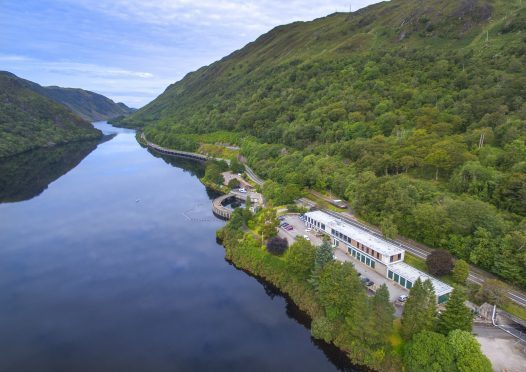Two power giants have led fresh calls for a “level playing field” to encourage investment in pumped storage hydro following the publication of a new report on the benefits of the technology.
Scottish Power and SSE’s pleas to the UK government were backed by Scotland’s energy minister, Paul Wheelhouse and industry body Scottish Renewables.
Compiled by certification body DNV GL and funded by the two power companies and the Scottish Government, the report sets out 20 key benefits of the technology’s expansion in the UK.
It also also identifies political and economic barriers facing what it describes as “one of the most cost-effective options for grid-scale energy storage”.
The UK electricity system already benefits from 24 gigawatt hours (GWh) pumped storage capacity, from four sites, including power stations at Cruachan, in Argyll and Foyers, near Inverness. Developments that could provide another 50GWh have planning permission.
Benefits of the technology highlighted in the report include alleviation of network congestion costs, reduction in waste of low carbon electricity during periods of low demand and increased security of supply.
The authors warn failure to to invest in pumped storage is likely to increase use of gas-fired and diesel generation, adding to greenhouse gas emissions and potentially driving up electricity bills.
They also say it could lead to the curtailment of variable renewables, like wind and solar. This, they add, could limit their contribution to reducing greenhouse gas emissions, increase costs and impact on the investment economics of renewables.
Neil Clitheroe, chief executive officer of ScottishPower Generation Holdings, said: “Pumped storage hydro is the most cost effective form of large-scale electricity storage and can help us make the most of the green megawatts we already produce and thus meet global climate change targets.
“Scotland has the landscape and resource potential to deliver a new generation of pumped storage hydro projects.
“We do not need subsidy to invest in electricity storage, but we do need a Government policy that would support our investment, and we will continue to work with Holyrood and Westminster to find common ground.”
His comments were backed by Mike Seaton, SSE’s director of development, who said pumped storage has a significant role in making the electricity system “more efficient, reliable and secure for the future.”
Mr Seaton added: “At a stroke, SSE’s consented 30GWh Coire Glas project would more than double the total amount of current pumped storage capacity in the UK.
“We’d like to see all parties working closely together to examine what steps can be taken to remove investment barriers which prevent new pumped storage projects being built.”
Mr Wheelhouse, minister for business, innovation and energy, who recently visited Foyers power station said the report highlighted the “huge opportunity” around pumped storage hydro.
He said: “This tried and tested technology can support peak demand and effectively store greater levels of electricity at times when renewable energy output is high but demand is low.
“This part of the hydropower industry needs a supportive policy and market framework – such as a ‘cap and floor’ mechanism, as is used for interconnectors – and I call upon the UK Government to heed calls from the sector and work with the industry and Scottish Government to remove investment barriers that prevent new pumped storage hydro projects being built.”
Hannah Smith, Policy Officer for Scottish Renewables, said: “It is important that government creates the right policy environment to encourage investment.
“We would like to see a more level playing field for pumped storage hydro which reflects the value it can bring to the electricity system.”










